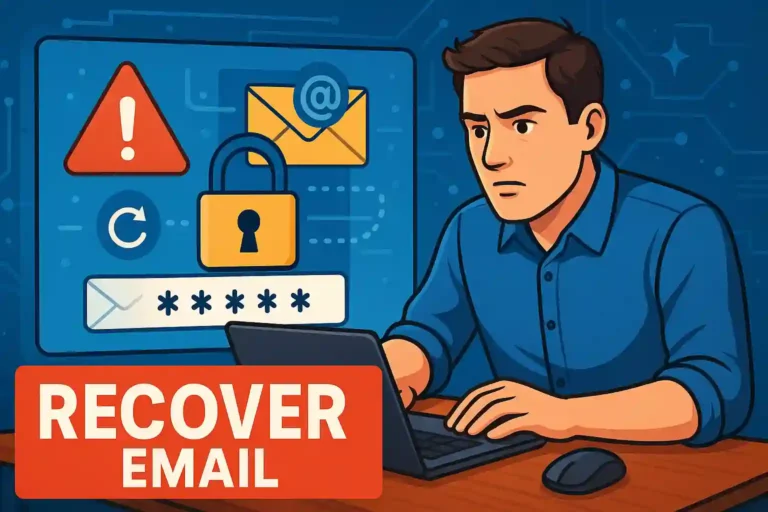Deleted Images? Recover Everything With Free Tools
Ever tried to recover photos and felt overwhelmed? You’re not alone. In our digital world, losing photos can feel like losing a piece of your story. Imagine scrolling through your gallery only to realize some moments are missing. It’s frustrating, right? Let’s explore how you can effortlessly recover photos and keep those memories alive. This guide is here to help you through the process, ensuring your precious captures find their way back to you. Ready to delve into it?
Understanding Photo Recovery
Photo recovery is crucial when you’ve accidentally deleted images or experienced data loss. Understanding how to retrieve these photos is vital in preserving your memories. Let’s explore some of the fundamental concepts of photo recovery.
What Is Photo Recovery?
Photo recovery involves retrieving lost or deleted images from various storage devices like hard drives, memory cards, and USB sticks. When a file is deleted, the data often remains on the storage medium until it is overwritten, making recovery possible.
Common Causes of Photo Loss
- Accidental Deletion: Mistakenly deleting photos is a common issue that many face.
- Corrupted Storage: Devices can become corrupted due to viruses or physical damage.
- Formatting: Unintentional formatting of a storage device can lead to data loss.
To increase your chances of successful photo recovery, act quickly and stop using the affected device. This prevents new data from overwriting your lost photos.
Photo Recovery Software
Several software programs can help recover photos. These tools scan storage devices for recoverable data, allowing you to restore lost files. It’s essential to choose a reputable photo recovery software that’s known for successful recoveries.
By understanding the basics of photo recovery, you can take the right steps to retrieve lost images. This knowledge will empower you to handle data loss situations more effectively.
Choosing The Right Tools
Choosing the right tools for photo recovery can significantly affect the success rate of restoring your lost images. Understanding the features and capabilities of various software options is essential.
Key Features to Look For
When selecting a photo recovery tool, consider software that offers a wide range of file compatibility. Ensure it supports the file formats you’ve used, such as JPEG, PNG, or RAW.
The software should have an easy-to-use interface. A user-friendly design makes the recovery process smoother, especially for those less tech-savvy.
Free vs. Paid Software
- Free Tools: These often provide basic recovery options. They are suitable for simple recovery tasks, but may have limitations in performance and features.
- Paid Software: Paid options usually offer comprehensive features like advanced recovery options and customer support. They are ideal for dealing with severe data loss.
Recommended Tools
Consider using tools like Recuva or PhotoRec. These popular choices provide reliable recovery capabilities.
By choosing the right tools, you can enhance your photo recovery efforts and increase the likelihood of retrieving your cherished memories.
Step-by-Step Guide To Recover Photos
Recovering lost photos can seem daunting, but with the right guidance, it becomes manageable. Here is a detailed step-by-step guide to help you recover your photos successfully.
Step 1: Stop Using the Device
The moment you notice photos are missing, stop using the device. This prevents new data from overwriting the lost photos, which could make recovery impossible.
Step 2: Choose the Right Recovery Software
Select reliable software that’s compatible with your device and file types. Options like Recuva and PhotoRec are popular choices. Install the software on a different device if possible to avoid overwriting data.
Step 3: Scan the Device
Open your chosen recovery software and connect your storage device. Run a full scan to search for recoverable files. This process may take time, depending on the storage size.
Step 4: Preview and Recover
After the scan, the software will show a list of recoverable photos. Preview these to ensure they are correct. Select the images you need and choose the recover option, saving them to a different device or drive to avoid overwriting other files.
Following these steps improves your chances of restoring lost photos, keeping your precious memories intact.
Preventing Future Photo Loss
Ensuring your photos are safe from future loss requires a proactive approach. By implementing some straightforward strategies, you can protect your cherished images.
Regular Backups
Create a habit of regularly backing up your photos. Use external hard drives, cloud storage services, or both. This redundancy ensures that if one backup fails, another remains accessible.
Organize Your Photos
Keep your photo library well-organized. Use folders and date them to make locating specific events easier. Regularly delete unnecessary photos to declutter and reduce the risk of accidental deletion.
Use Reliable Storage Devices
Invest in high-quality storage devices. Cheap options may fail unexpectedly and risk losing your data. Brands with good reviews often provide more reliable performance.
Protect Against Malware
Ensure your devices have robust anti-virus and malware protection to prevent harmful attacks that could corrupt or delete your photos.
By integrating these practices into your routine, you can significantly reduce the risk of future photo loss, keeping your memories safe and secure.
FAQ – Frequently Asked Questions About Recover Photos
What should I do first if I accidentally delete photos?
Stop using the device immediately to prevent new data from overwriting the deleted photos, and then use recovery software.
How can I choose the best photo recovery software?
Look for software with wide file compatibility, an easy-to-use interface, and good user reviews to ensure reliability.
Is free photo recovery software effective?
Free software can recover basic lost data, but for complex cases, paid options offer more features and better results.
How often should I back up my photos?
Regularly back up your photos, ideally after new uploads or significant events, to ensure data safety.
What are the best practices for organizing my photos?
Keep photos in dated folders, use consistent naming conventions, and routinely clean up duplicates or unwanted images.
How can malware affect my photos?
Malware can corrupt or delete your files. Protect your devices with strong antivirus software to safeguard your photos.






